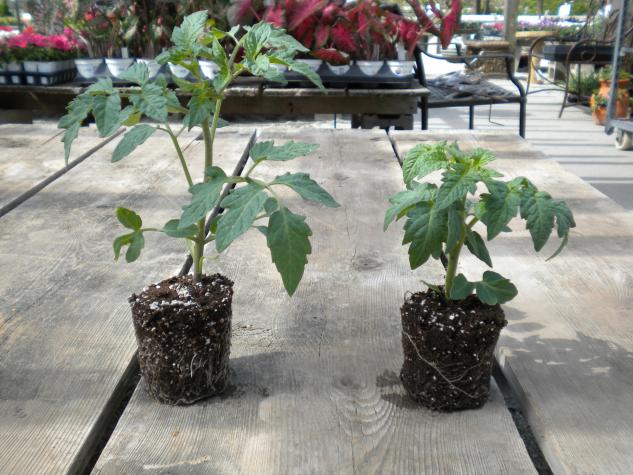BLUE SPRINGS, Mo.–Success in the vegetable garden hinges on healthy plants. Knowing the difference between a struggling transplant and a top-notch seedling may seem like a no-brainer, but without an excellent example available for comparison, consumers often purchase transplants on the lower end of quality spectrum, said a University of Missouri Extension horticulture specialist.
“All good transplants have at least three things in common,” said Marlin Bates. “They are short, stocky and dark green—unless they are supposed to be some other color, of course.”
Here’s how these characteristics translate into healthy transplants:
Short plants are desirable mostly because the alternative (leggy plants) is undesirable, Bates said. As long as the transplant has reached an appropriate stage of growth, which is the four- to six-leaf stage for most vegetable transplants, the only way for them to be short is if they have grown in an environment with ample light.
“Perhaps the best indicator of whether or not a plant is short or compact is by looking at the internode length—that is, the space on the stem between the leaves,” he said. “Plants that have not been grown with the appropriate amount of light exposure will have long internodes, while plants that have will possess short internodes.”
Stocky plants are favorable because they are most likely to withstand the outside environment. “Again, the alternative of spindly plants is not very attractive, but there is an entire spectrum of stem girth between stocky and spindly,” Bates said. When transplants are produced in greenhouses, they typically aren’t subject to the strong gusts of wind that the plants will have to reckon with in the garden. Without this or some other force moving the plant back and forth, such as a fan, it is difficult for the plant to develop a strong stem. However, many producers will take the extra step to ensure that their transplants end up with stocky stems.
Dark green coloration is an indicator that the transplant has adequate fertility. “Pale green—or any other color, for that matter—is only desirable if that is the color of the mature plant,” he said. “For most transplants, though, dark green is better than pale. The nutritional status of the transplant you buy in the spring is just as important as the nutritional status of the mature, producing plant in the summer.”
Following these tips will help you make sure the plants you place in your garden have been grown in a favorable environment. “This is the single best way to get your vegetable garden off to a great start,” he said.
Writer: Mildred Carter

